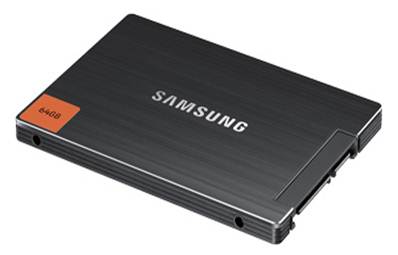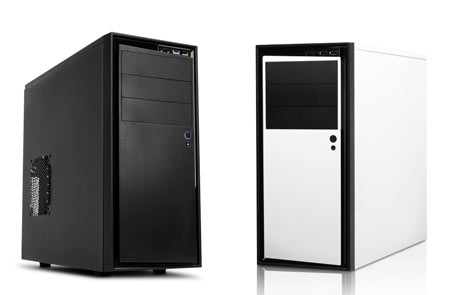Fall Budget System Buyer's Guide
by Zach Throckmorton on September 1, 2012 12:00 AM ESTDevelopments in the Budget Marketplace
Since our last budget buyer's guide back in November 2011, there have been many developments in the budget sector of the DIY market. Perhaps most noteworthy, SSD costs have finally fallen far enough that they are within reach of price-conscious builders. Given that mechanical hard drive prices remain inflated in the wake of last year's flooding in Thailand, I have been putting lower capacity SSDs in budget builds more frequently than HDDs in the last few months.
That said, it's worth elaborating that while you might have become used to larger capacity hard drives in the last few years, a 60/64GB SSD is more than enough space for a basic machine that will have Windows 7, Office, and a few other productivity applications installed on it and not be used for personal storage. Even a 40GB SSD can comfortably contain Windows 7, Office, and many small applications. Of course, the small size of SSDs might very well preclude their inclusion in your system if you need more space—know what your storage needs will be. Thus, in the office builds, we include both SSD and HDD options. Gamers will likely want to stick with larger HDDs because a gaming library will quickly surpass the capacities of less expensive SSDs.
space for a basic machine that will have Windows 7, Office, and a few other productivity applications installed on it and not be used for personal storage. Even a 40GB SSD can comfortably contain Windows 7, Office, and many small applications. Of course, the small size of SSDs might very well preclude their inclusion in your system if you need more space—know what your storage needs will be. Thus, in the office builds, we include both SSD and HDD options. Gamers will likely want to stick with larger HDDs because a gaming library will quickly surpass the capacities of less expensive SSDs.
Also of note is the disappearance of AMD's lower-end Athlon II CPUs from retail channels. I probably built more computers with the AMD Athlon II X2 250 than every other CPU model combined from 2009 to earlier this year. That chip and its close relatives are now rarely available from retailers, and that limits budget processor choices. In the previous budget buyer's guide, I compared the Athlon II X2 250 with the then newcomer Intel Celeron G530, a super-cheap chip based on the Sandy Bridge microarchitecture. The G530 has become the king of the budget CPUs. While AMD's Llano APUs offer acceptable computing, for CPU-centric tasks—that is, non-gaming—the G530 remains a better choice than the comparably priced lower-end Llanos. Since most home and office users aren't playing games, I've built more and more G530 systems as X2 250s have become harder to find. However, the higher-end Llano APUs offer a very good value for gamers on a very tight budget.

There are also a few new budget cases that have caught our attention here at AnandTech in 2012 that we'll highlight in the guide. NZXT's Source 210 case is a capacious offering that's easy to work in, offers attractive, subdued lines, and is well-built; its 'elite' brother is one of the least expensive cases with front panel USB 3.0 support. Dustin recently reviewed the Cooler Master Elite 120, an inexpensive ITX case that I just got my own hands on that has impressed me.
Finally, new video cards—as well as old video cards with new prices—put more gaming power in the hands of budget gamers than ever before. Those are covered on the gaming build page. First, though, we'll start with the basic office productivity builds on the next page.










39 Comments
View All Comments
Z Throckmorton - Saturday, September 1, 2012 - link
Hi bigjer - The stock fan included with the CPU will work fine in these builds; no need to spend money on an aftermarket cooler. Hope this helps - Zachbill4 - Saturday, September 1, 2012 - link
Anybody who claims PC gaming isn't expensive as hell hardware wise is lying.PC gaming has a very well defined sweet spot. Buying outside of it up or down is just stupid. With this build you just wasted $400 on a piece of junk. Spend 700-800 and build a real machine or dont bother.
Decent Intel Qaud Core=220
Motherboard=100
Decent cheap case=50
8GB RAM=40
Decent basic PSU=50
1T TB HDD= I dunno what these cost with the changing prices after flooding, $70?
OEM Windows=90
$620 and you need a GPU. Spend anywhere from $150 on something like a 6870 to $200 on a 7850 (hell I even saw a 7870 for 199 after rebate recently)
$770-$820, a good rig that should last 3+ years just like my current Q6600 build has. Dont bother throwing money down the drain on anything less.
bznotins - Saturday, September 1, 2012 - link
While $437 isn't going to get you the "sweet spot" gaming rig, it still gets you *a* gaming rig.Not everyone has the budget for the sweet spot rig.
The rig Zach put together will play SC2 at low settings and many other games at low settings. That's enough for some people, especially when it's compared to the alternative -- nothing at all.
I play SC2 on my laptop that only has HD3000. Is it as good as my primary gaming rig? No. But does it get me my fix when I'm on the road? Yup. Is it playable? Yup. I can also play WoW and SW:TOR on it. The rig Zach put together here is light years ahead of my laptop.
Just because it's not in the sweet spot, doesn't mean it is useless.
For someone who has 50% more to spend, then yeah, the best bet is to get something like what you described. But for someone who is reaching just to squeeze $400+ into their budget, this is adequate.
estaffer - Sunday, September 2, 2012 - link
should be 100% more to spend but i agree. the topic says "budget" not "sweet spot".dave1_nyc - Saturday, September 1, 2012 - link
I bought a G530 last spring to use for a file server machine, and figured what the heck, how good does it have to be for what I was using it for.While this is clearly an anecdotal comment, I played around with the system as a general purpose Win 7 machine, even using the built-in graphics (which are just plain old HD) and was really surprised at how capable a chip it is for under $50.
zappb - Sunday, September 2, 2012 - link
Is this fast enough for excel, crm, 10 + chrome tabs and a financial / erp app, payroll app etc..?Fantastic value in this build, would replace 4 of our core 2 due / Vista / Windows xp machines this month with this exact build (only change would be 120gb SSD instead of 64gb and no local storage).
KAlmquist - Sunday, September 2, 2012 - link
Even with budget systems like these, a mechanical hard drive will still be a major performance bottleneck, so if 60 GB isn't enough storage space I would think hard about springing for a 120 GB SSD rather than buying a mechanical drive.If reliability is critical consider the Samsung 830 ($100) or the Intel 330 ($104). The Samsung is $40 more than the mechanical drive, but either of these drives will be vastly faster, and probably significantly more reliable, than a mechanical drive.
Another option is the OCZ Vertex Plus, at $80, or $70 after rebate. The performance is significantly less than the Samsung or Intel drives mentioned above, but that don't matter too much. The Vertex Plus is fast enough that it won't be the major bottleneck in a budget system. The only reason I hesitate to recommend it is that OCZ Technology's quality control seems to be rather hit and miss. The Vertex Plus is not cutting edge technology, so if you are willing to buy from OCZ Technology at all, the Vertex Plus would seem to be a relatively safe choice.
Onus - Thursday, September 6, 2012 - link
After reading all the comments about what a mere "TWO DOLLARS", or $5, or $20 could add to this machine, I would suggest that some of these ideas might be mentioned in the article. Especially when going for a rock-bottom budget, another $5-$10 can make a huge difference, and it's worth pointing that out.IMHO, someone on a budget probably cannot afford to replace junk that fails. The reduction of hard drive warranty periods to one year is a disgrace; I've been sticking to the more expensive WD Black drives that still have five year warranties. That's tough on a budget, but not as tough as having to buy two or three cheap drives that fail just out of warranty. I would definitely sacrifice a little performance elsewhere to get more solid reliability.
I disagree 100% with the poster who suggested such a cheap machine for games is a waste of money. It blows the doors off the gaming rigs of only eight or ten years ago, and people sure had lots of fun with the games available back then. And, even modern titles still look pretty good turned down to "medium" settings. Of course that isn't my preference, but I wouldn't call it insufferable, especially compared to the alternatives.
shorty lickens - Sunday, September 30, 2012 - link
for the minor price difference you should get a lot more than 250 gigs. Especially for a gaming rig. Its nice to not have to uninstall games. Also, mods and stuff can take up a lot of space. And its also nice to have all your MP3's on the game rig to play your own music in the background. (Though you could also stream music from another computer or server).